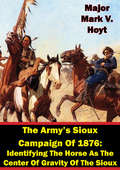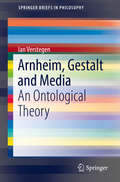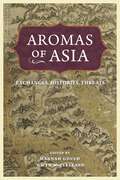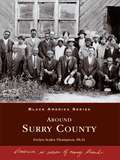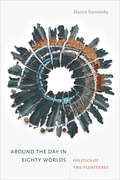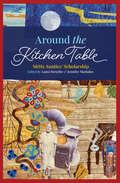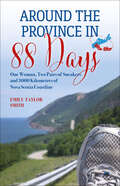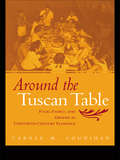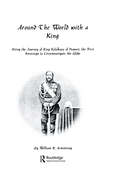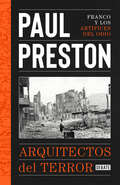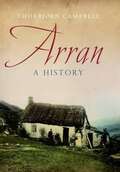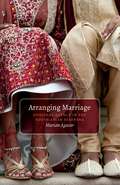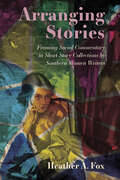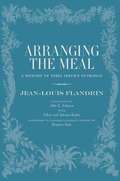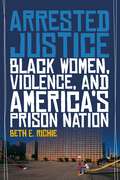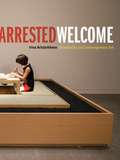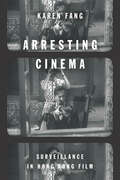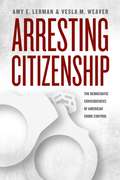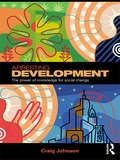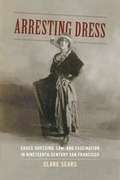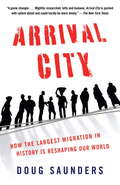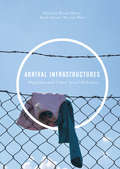- Table View
- List View
The Army’s Sioux Campaign of 1876: Identifying the Horse as the Center of Gravity of the Sioux
by Major Mark V. HoytDuring the first half of 1876 the Army conducted three expeditions against the Sioux and Cheyenne Indians. The results of these three expeditions were: the first expedition destroying a small village, the second expedition being defeated in a meeting engagement, and the third expedition suffering the annihilation of five companies. The results lead to questioning the Army's focus on attacking and destroying villages as the primary target of their expeditions. If the Army had a complete understanding of the Sioux they would have realized that the "hub of all power" or center of gravity of the Sioux was the horse, which every major aspect of Sioux life was augmented and dependent upon. The first three expeditions of the Sioux Campaign of 1876 demonstrate that: senior Army commanders planned their campaigns, expeditions, and organizations around their knowledge of Sioux mobility, the primary source of power for the Sioux warrior was mobility gained from the horse, Army forces could not bring their advantage in firepower to bear on Sioux warriors. Army commanders understood the mobility of the Sioux village and their warriors, but they failed to take the next step--challenging the old assumption that attacking villages and using a strategy of exhaustion was the correct way to subdue the Sioux. Instead, Army forces should have concentrated their attacks on center of gravity of the Sioux--the horse.
Arnheim for Film and Media Studies (AFI Film Readers)
by Scott HigginsRudolf Arnheim (1904-2007) was a pioneering figure in film studies, best known for his landmark book on silent cinema Film as Art. He ultimately became more famous as a scholar in the fields of art and art history, largely abandoning his theoretical work on cinema. However, his later aesthetic theories on form, perception and emotion should play an important role in contemporary film and media studies. In this enlightening new volume in the AFI Film Readers series, an international group of leading scholars revisits Arnheim’s legacy for film and media studies. In fourteen essays, the contributors bring Arnheim’s later work on the visual arts to bear on film and media, while also reassessing the implications of his film theory to help refine our grasp of Film as Art and related texts. The contributors discuss a broad range topics including Arnheim’s film writings in relation to modernism, his antipathy to sound as well as color in film, the formation of his early ideas on film against the social and political backdrop of the day, the wider uses of his methodology, and the implications of his work for digital media. This is essential reading for any film and media student or scholar seeking to understand the meaning and contemporary impact of Arnheim’s foundational work in film theory and aesthetics.
Arnheim, Gestalt and Media: An Ontological Theory (SpringerBriefs in Philosophy)
by Ian VerstegenThis monograph presents a synthesis and reconstruction of Rudolf Arnheim’s theory of media. Combining both Arnheim’s well-known writings on film and radio with his later work on the psychology of art, the author presents a coherent approach to the problem of the nature of a medium, space and time, and the differentia between different media. The latent ontological commitments of Arnheim’s theories is drawn out by affirming Arnheim’s membership in the Brentano school of Austrian philosophy, which allows his theories to be clarified and strengthened, particularly with the metaphysical writings of Roman Ingarden. The resulting theory is relational, portraying essential medial differences with neutral criteria and allowing for a rigorous definition of a medium. The way in which a medium is based on the inherent dispositions of medial materials creates a highly appealing theory that is determinate without being deterministic. The theory is thus highly timely as people in media studies seek to address the determinate nature of media after the post-medium condition. The book will appeal to researchers and graduate students in cultural and media studies as well as architecture and design.
Aromas of Asia: Exchanges, Histories, Threats (Perspectives on Sensory History)
by Hannah Gould and Gwyn McClellandA uniquely powerful marker of ethnic, gender, and class identities, scent can also overwhelm previously constructed boundaries and transform social-sensory realities within contexts of environmental degradation, pathogen outbreaks, and racial politics. This innovative multidisciplinary volume critically examines olfaction in Asian societies with the goal of unlocking its full potential as an analytical frame and lived phenomenon.Featuring contributions from international scholars with deep knowledge of the region, this volume conceptualizes Asia and its borders as a dynamic, transnationally connected space of olfactory exchange. Using examples such as trade along the Silk Road; the diffusion of dharmic religious traditions out of South Asia; the waves of invasion, colonization, and forced relocation that shaped the history of the continent; and other “sensory highways” of contact, the contributors break down essentializing olfactory tropes and reveal how scent functions as a category of social and moral boundary-marking and boundary-breaching within, between, and beyond Asian societies. Smell shapes individual, collective, and state-based memory, as well as discourses about heritage and power. As such, it suggests a pervasive and powerful intimacy that contributes to our understanding of the human condition, mobility, and interconnection.In addition to the editors, the contributors to this volume include Khoo Gaik Cheng, Jean Duruz, Qian Jia, Shivani Kapoor, Adam Liebman, Lorenzo Marinucci, Peter Romaskiewicz, Saki Tanada, Aubrey Tang, and Ruth E. Toulson.
Around Surry County (Black America Series)
by Evelyn Scales ThompsonFrom slavery in the 1800s to freedom in the 1950s, Black America Series: Around Surry County traces the footsteps of African Americans through their transition from house servants and field hands to land owners, farmers, andsuccessful small business proprietors. This detailed pictorial history celebrates and honors the strong faith, courage, and determination of the Surry County area's black community.
Around the Day in Eighty Worlds: Politics of the Pluriverse (Thought in the Act)
by Martin SavranskyIn Around the Day in Eighty Worlds Martin Savransky calls for a radical politics of the pluriverse amid the ongoing devastation of the present. Responding to an epoch marked by the history of colonialism and ecological devastation, Savransky draws on the pragmatic pluralism of William James to develop what Savransky calls a “pluralistic realism”—an understanding of the world as simultaneously one and many, ongoing and unfinished, underway and yet to be made. Savransky explores the radical multifariousness of reality by weaving key aspects of James's thought together with divergent worlds and stories: of Magellan's circumnavigation, sorcery in Mozambique, God's felt presence among a group of evangelicals in California, visible spirits in Zambia, and ghosts in the wake of the 2011 tsunami in Japan. Throughout, he experiments with these storied worlds to dramatize new ways of approaching the politics of radical difference and the possibility of transforming reality. By exploring and constructing relations between James's pluralism and the ontological turn in anthropology, Savransky offers a new conceptualization of the pluriverse that fosters modes of thinking and living otherwise.
Around the Kitchen Table: Métis Aunties' Scholarship
by Jennifer Markides Laura ForsytheHonouring the scholarship of Métis matriarchs While surveying the field of Indigenous studies, Laura Forsythe and Jennifer Markides recognized a critical need for not only a Métis-focused volume, but one dedicated to the contributions of Métis women. To address this need, they brought together work by new and established scholars, artists, storytellers, and community leaders that reflects the diversity of research created by Métis women as it is lived, considered, conceptualized, and re-imagined. With writing by Emma LaRocque and other forerunners of Métis studies, Around the Kitchen Table looks beyond the patriarchy to document and celebrate the scholarship of Métis women. Focusing on experiences in post-secondary environments, this collection necessarily traverses a range of methodologies. Spanning disciplines of social work, education, history, health care, urban studies, sociology, archaeology, and governance, contributors bring their own stories to explorations of spirituality, material culture, colonialism, land-based education, sexuality, language, and representation. The result is an expansive, heartfelt, and accessible community of Métis thought. Reverent and revelatory, this collection centres the strong aunties and grandmothers who have shaped Métis communities, culture, and identities with teachings shared in classrooms, auditoriums, and around the kitchen table.
Around the Province in 88 Days: One Woman, Two Pairs of Sneakers and 3000 Kilometers of Nova Scotia Coastline
by Emily Taylor SmithA Nova Scotia woman shares her experience of walking the province&’s coastline for charity and what she learned along the way.Early on a May morning, a young Nova Scotia woman straps on a small backpack and leaves the Halifax Common to start her journey along the coastal roads of Nova Scotia. Planning to cover almost a marathon a day, she will walk the perimeter of the entire province in just under three months to raise awareness for the Heart and Stroke Foundation and the Brigadoon Children&’s Camp Society. She billets with locals each night and meets countless Nova Scotians who come out to walk with her, support her project, and tell their stories. Along the way, fellow walkers share family folklore, tales of buried gold, lost fingers, and detailed instructions on how to catch a beaver by the tail. &“We don&’t wear make-up and we don&’t dust,&” explains one of the women Emily meets near Sable River, when asked how she found the time to rebuild the trails in her area and win the Community Spirit Award. Struggling with blisters, fatigue, and an encounter with a bear cub, Emily walks on, overwhelmed by the generosity of her hosts in each community and by the stunning coastal views at every turn. Around the Province in 88 Days details Emily&’s beautiful and quirky experiences on the road as she develops an intimate connection with the province and its people, unsuspecting of the vast changes the trip will eventually set in motion in her own life.
Around the Tuscan Table: Food, Family, and Gender in Twentieth Century Florence
by Carole M. CounihanIn this delicious book, noted food scholar Carole M. Counihan presents a compelling and artfully told narrative about family and food in late 20th-century Florence. Based on solid research, Counihan examines how family, and especially gender have changed in Florence since the end of World War II to the present, giving us a portrait of the changing nature of modern life as exemplified through food and foodways.
Around the World in 80 Ways: Exploring Our Planet Through Maps and Data
by Stephen WebbAround the World in 80 Ways offers a (sometimes opinionated) discussion of 80 data-driven maps of our planet. Taken together, the maps tell a story about the physical world; about the impact our species is having on the world; and about how people live in the world – or at least how we lived immediately before the emergence of Covid-19. The maps lie. All maps lie. But the origins of the deceptions are explained, the data sources are signposted and referenced, and the readers are shown how to create their own maps using freely available software. The reader is thus armed with the tools needed to explore local, national or world data – on topics ranging from science to society; environment to entertainment; wealth to wellbeing – a valuable skill in an age when certain politicians are happy to refer to “alternative facts” and media outlets deliver data visualizations that sometimes mislead as much as inform.
Around the World in Seventy-Two Days and Other Writings
by Nellie BlyA collection of the articles and writings of famed American journalist Nellie Bly. .
Around The World With A King
by ArmstrongFirst published in 2001. Routledge is an imprint of Taylor & Francis, an informa company.
Arquitectos del terror: Franco y los artífices del odio
by Paul PrestonVuelve Paul Preston con otro libro imprescindible para entender nuestra historia reciente. La Guerra Civil se libró para anular las reformas educativas y sociales de la Segunda República y para combatir su cuestionamiento del orden establecido. Los rebeldes lucharon a favor de los terratenientes, industriales, banqueros, clérigos y oficiales del Ejército, cuyos intereses se habían visto amenazados, y en contra de los liberales e izquierdistas que impulsaban las reformas. Sin embargo, en los años de república, de 1931 a 1936, a lo largo de la guerra y durante muchas décadas después, se siguió fomentando en España el mito de que el enemigo derrotado en la contienda era el contubernio judeomasónico y bolchevique. No obstante, el presente libro no es una historia del contubernio, del antisemitismo ni de la antimasonería en España, sino que adopta la forma de pequeñas biografías de las principales figurasantisemitas y antimasónicas que propagaron ese mito, y de los personajes centrales que pusieron en práctica los horrores que este justificaba. Desmontar sus falsedades es uno de los objetivos fundamentales de esta obra.
Arran: A History
by Thorbjorn CampbellA Scottish historian provides an original, fascinating, and comprehensive account of the Isle of Arran from the prehistoric era to the 20th-century. Arran is an archaeological and geological treasure trove of stunning scenic beauty. Its history stretches back more than five thousand years to the great stone circles, whose remnants still decorate the plains of Machrie. Runic inscriptions tell of a Viking occupation lasting centuries. Later, in 1307, King Robert the Bruce began his triumphant comeback from Arran. Subsequently, the island was repeatedly caught up and devastated in the savage dynastic struggles of medieval Scotland. After the 1707 Parliamentary Union, came a new and strange upheaval: Arran became a testing ground for the Industrial Revolution. The ancient &‘runrig&’ style of farming gave way to enclosed fields and labor-saving methods, which eventually lead to the socially disastrous Highland Clearances. The misfortune of the times was culminated by the Great Irish Potato Famine of 1845. At last, the area settled into a stable mixture of agriculture and tourism in the 19th and 20th centuries.
Arranging Marriage: Conjugal Agency in the South Asian Diaspora
by Marian AguiarThe first critical analysis of contemporary arranged marriage among South Asians in a global context Arranged marriage is an institution of global fascination—an object of curiosity, revulsion, outrage, and even envy. Marian Aguiar provides the first sustained analysis of arranged marriage as a transnational cultural phenomenon, revealing how its meaning has been continuously reinvented within the South Asian diaspora of Britain, the United States, and Canada. Aguiar identifies and analyzes representations of arranged marriage in an interdisciplinary set of texts—from literary fiction and Bollywood films, to digital and print media, to contemporary law and policy on forced marriage.Aguiar interprets depictions of South Asian arranged marriage to show we are in a moment of conjugal globalization, identifying how narratives about arranged marriage bear upon questions of consent, agency, state power, and national belonging. Aguiar argues that these discourses illuminate deep divisions in the processes of globalization constructed on a fault line between individualist and collectivist agency and in the process, critiques neoliberal celebrations of &“culture as choice&” that attempt to bridge that separation. Aguiar advocates situating arranged marriage discourses within their social and material contexts so as to see past reductive notions of culture and grasp the global forces mediating increasingly polarized visions of agency.
Arranging Stories: Framing Social Commentary in Short Story Collections by Southern Women Writers
by Heather A. FoxBetween the 1880s and the 1940s, opportunities for southern white women writers increased dramatically, bolstered by readers’ demands for southern stories in northern periodicals. Confined by magazine requirements and social expectations, writers often relied on regional settings and tropes to attract publishers and readers before publishing work in a collection. Selecting and ordering magazine stories for these collections was not arbitrary or dictated by editors, despite a male-dominated publishing industry. Instead, it allowed writers to privilege stories, or to contextualize a story by its proximity to other tales, as a form of social commentary. For Kate Chopin, Ellen Glasgow, Marjorie Kinnan Rawlings, and Katherine Anne Porter—the authors featured in this book—publishing a volume of stories enabled them to construct a narrative framework of their own. Arranging Stories: Framing Social Commentary in Short Story Collections by Southern Women Writers is as much about how stories are constructed as how they are told. The book examines correspondence, manuscripts, periodicals, and first editions of collections. Each collection’s textual history serves as a case study for changes in the periodical marketplace and demonstrates how writers negotiated this marketplace to publish stories and garner readership. The book also includes four tables, featuring collected stories’ arrangements and publication histories, and twenty-five illustrations, featuring periodical publications, unpublished letters, and manuscript fragments obtained from nine on-site and digital archives. Short story collections guide readers through a spatial experience, in which both individual stories and the ordering of those stories become a framework for interpreting meaning. Arranging Stories invites readings that complicate how we engage collected works.
Arranging the Meal: A History of Table Service in France
by Jean-Louis Flandrin Julie E. Johnson Antonio Roder Sylvie Roder Beatrice FinkThe sequence in which food has been served at meals has changed greatly over the centuries and has also varied from one country to another, a fact noted in virtually every culinary history. Most food writers have treated the more significant alterations as stand-alone events. The most famous example of such a change occurred in the nineteenth century, when service a la francaise--in which the stunning presentation made a great show but diners had to wait to be served--gave way to service a la russe, in which platters were passed among diners who served themselves. But in Arranging the Meal, the late culinary historian Jean-Louis Flandrin argues that such a change in the order of food service is far from a distinct event. Instead he regards it as a historical phenomenon, one that happened in response to socioeconomic and cultural factors--another mutation in an ever-changing sequence of customs. As France's most illustrious culinary historian, Flandrin has become a cult figure in France, and this posthumous book is not only his final word but also a significant contribution to culinary scholarship. A foreword by Beatrice Fink places Flandrin's work in context and offers a personal remembrance of this French culinary hero.
Arrested Justice: Black Women, Violence, and America’s Prison Nation
by Beth E. RichieIlluminates the threats Black women face and the lack of substantive public policy towards gendered violenceBlack women in marginalized communities are uniquely at risk of battering, rape, sexual harassment, stalking and incest. Through the compelling stories of Black women who have been most affected by racism, persistent poverty, class inequality, limited access to support resources or institutions, Beth E. Richie shows that the threat of violence to Black women has never been more serious, demonstrating how conservative legal, social, political and economic policies have impactedactivism in the U.S.-based movement to end violence against women. Richie argues that Black women face particular peril because of the ways that race and culture have not figured centrally enough in the analysis of the causes and consequences of gender violence. As a result, the extent of physical, sexual and other forms of violence in the lives of Black women, the various forms it takes, and the contexts within which it occurs are minimized—at best—and frequently ignored. Arrested Justice brings issues of sexuality, class, age, and criminalization into focus right alongside of questions of public policy and gender violence, resulting in a compelling critique, a passionate re-framing of stories, and a call to action for change.
Arrested Welcome: Hospitality in Contemporary Art
by Irina AristarkhovaInterpreting the meaning of hospitality in an unwelcoming political moment Amid xenophobic challenges to America&’s core value of welcoming the tired and the poor, Irina Aristarkhova calls for new forms of hospitality in her engagement with the works of eight international artists. In this first monograph on hospitality in contemporary art, Aristarkhova employs a feminist perspective to critically explore the artworks of Ana Prvački, Faith Wilding, Lee Mingwei, Kathy High, Mithu Sen, Pippa Bacca, Silvia Moro, and Ken Aptekar and asks who, how, and what determines who is worthy of our welcome. Spanning a diverse range of contemporary art practices, Arrested Welcome shows how artists challenge our existing notions of hospitality—culturally, philosophically, and politically. From the role of &“microcourtesies&” in social change to the portrayal of waiting as a feminist endeavor, Aristarkhova looks deeply into topics such as gender stereotypes of welcome, ways to reclaim civility, and the means by which guests (sometimes human, sometimes animal) push the limits of our hosting traditions. Blending a feminist analysis of hospitality with in-depth case studies on how contemporary artists stimulate personal reflection and political engagement, Aristarkhova initiates these important conversations at a critical time of national and international hospitality crises.
Arresting Cinema: Surveillance in Hong Kong Film
by Karen FangWhen Ridley Scott envisioned Blade Runner's set as "Hong Kong on a bad day," he nodded to the city's overcrowding as well as its widespread use of surveillance. But while Scott brought Hong Kong and surveillance into the global film repertoire, the city's own cinema has remained outside of the global surveillance discussion. In Arresting Cinema, Karen Fang delivers a unifying account of Hong Kong cinema that draws upon its renowned crime films and other unique genres to demonstrate Hong Kong's view of surveillance. She argues that Hong Kong's films display a tolerance of—and even opportunism towards—the soft cage of constant observation, unlike the fearful view prevalent in the West. However, many surveillance cinema studies focus solely on European and Hollywood films, discounting other artistic traditions and industrial circumstances. Hong Kong's films show a more crowded, increasingly economically stratified, and postnational world that nevertheless offers an aura of hopeful futurity. Only by exploring Hong Kong surveillance film can we begin to shape a truly global understanding of Hitchcock's "rear window ethics."
Arresting Citizenship: The Democratic Consequences of American Crime Control
by Amy E. Lerman Vesla M. WeaverThe numbers are staggering: One-third of America’s adult population has passed through the criminal justice system and now has a criminal record. Many more were never convicted, but are nonetheless subject to surveillance by the state. Never before has the American government maintained so vast a network of institutions dedicated solely to the control and confinement of its citizens. A provocative assessment of the contemporary carceral state for American democracy, Arresting Citizenship argues that the broad reach of the criminal justice system has fundamentally recast the relation between citizen and state, resulting in a sizable--and growing--group of second-class citizens. From police stops to court cases and incarceration, at each stage of the criminal justice system individuals belonging to this disempowered group come to experience a state-within-a-state that reflects few of the country’s core democratic values. Through scores of interviews, along with analyses of survey data, Amy E. Lerman and Vesla M. Weaver show how this contact with police, courts, and prisons decreases faith in the capacity of American political institutions to respond to citizens’ concerns and diminishes the sense of full and equal citizenship--even for those who have not been found guilty of any crime. The effects of this increasingly frequent contact with the criminal justice system are wide-ranging--and pernicious--and Lerman and Weaver go on to offer concrete proposals for reforms to reincorporate this large group of citizens as active participants in American civic and political life.
Arresting Development: The power of knowledge for social change
by Craig JohnsonScholars have become increasingly concerned about the impact of neo-liberalism on the field of development. Governments around the world have for some time been exposed to the forces of globalization and macro-economic reform, reflecting the power and influence of the world’s principal international economic institutions and a broader commitment to the principles of neo-classical economics and free trade. Concerns have also been raised that neo-classical theory now dominates the ways in which scholars frame and ask their questions in the field of development. This book is about the ways in which ideologies shape the construction of knowledge for development. A central theme concerns the impact of neo-liberalism on contemporary development theory and research. The book’s main objectives are twofold. One is to understand the ways in which neo-liberalism has framed and defined the ‘meta-theoretical’ aims and assumptions of what is deemed relevant, important and appropriate to the study of development. A second is to explore the theoretical and ideological terms on which an alternative to neo-classical theory may be theorized, idealized and pursued. By tracing the impact of Marxism, postmodernism and liberalism on the study of development, Arresting Development contends that development has become increasingly fragmented in terms of the theories and methodologies it uses to understand and explain complex and contextually-specific processes of economic development and social change. Outside of neo-classical economics (and related fields of rational choice), the notion that social science can or should aim to develop general and predictive theories about development has become mired in a philosophical and political orientation that questions the ability of scholars to make universal or comparative statements about the nature of history, cultural diversity and progress. To advance the debate, a case is made that development needs to re-capture what the American sociologist Peter Evans once called the ‘comparative institutional method.’ At the heart of this approach is an inductive methodology that searches for commonalities and connections to broader historical trends and problems while at the same time incorporating divergent and potentially competing views about the nature of history, culture and development. This book will be of interest to scholars and students of Development, Social and Political Studies and it will also be beneficial to professionals interested in the challenge of constructing "knowledge for development."
Arresting Dress: Cross-Dressing, Law, and Fascination in Nineteenth-Century San Francisco
by Clare SearsIn 1863, San Francisco's Board of Supervisors passed a law that criminalized appearing in public in "a dress not belonging to his or her sex." Adopted as part of a broader anti-indecency campaign, the cross-dressing law became a flexible tool for policing multiple gender transgressions, facilitating over one hundred arrests before the century's end. Over forty U.S. cities passed similar laws during this time, yet little is known about their emergence, operations, or effects. Grounded in a wealth of archival material, Arresting Dress traces the career of anti-cross-dressing laws from municipal courtrooms and codebooks to newspaper scandals, vaudevillian theater, freak-show performances, and commercial "slumming tours." It shows that the law did not simply police normative gender but actively produced it by creating new definitions of gender normality and abnormality. It also tells the story of the tenacity of those who defied the law, spoke out when sentenced, and articulated different gender possibilities.
Arrival City: The Final Migration and Our Next World
by Doug SaundersLook around: the largest migration in human history is under way. For the first time ever, more people are living in cities than in rural areas. Between 2007 and 2050, the world's cities will have absorbed 3.1 billion people. Urbanization is the mass movement that will change our world during the twenty-first century, and the "arrival city" is where it is taking place. The arrival city exists on the outskirts of the metropolis, in the slums, or in the suburbs; the American version is New York's Lower East Side of a century ago or today's Herndon County, Virginia. These are the places where newcomers try to establish new lives and to integrate themselves socially and economically. Their goal is to build communities, to save and invest, and, hopefully, move out, making room for the next wave of migrants. For some, success is years away; for others, it will never come at all. As vibrant places of exchange, arrival cities have long been indicators of social health. Whether it's Paris in 1789 or Tehran in 1978, whenever migrant populations are systematically ignored, we should expect violence and extremism. But, as the award-winning journalist Doug Saunders demonstrates, when we make proper investments in our arrival cities--through transportation, education, security, and citizenship--a prosperous middle class develops. Saunders takes us on a tour of these vital centers, from Maryland to Shenzhen, from the favelas of Rio to the shantytowns of Mumbai, from Los Angeles to Nairobi. He uncovers the stories--both inspiring and heartbreaking--of the people who live there, and he shows us how the life or death of our arrival cities will determine the shape of our future.From the Hardcover edition.
Arrival Infrastructures: Migration and Urban Social Mobilities
by Bruno Meeus Karel Arnaut Bas Van HeurThis volume introduces a strategic interdisciplinary research agenda on arrival infrastructures. Arrival infrastructures are those parts of the urban fabric within which newcomers become entangled on arrival, and where their future local or translocal social mobilities are produced as much as negotiated. Challenging the dominance of national normativities, temporalities, and geographies of “arrival,” the authors scrutinize the position and potential of cities as transnationally embedded places of arrival. Critically interrogating conceptions of migrant arrival as oriented towards settlement and integration, the volume directs attention to much more diverse migration trajectories that shape our cities today. Each chapter examines how migrants, street-level bureaucrats, local residents, and civil society actors build—with the resources they have at hand—the infrastructures that accommodate, channel, and govern arrival.
